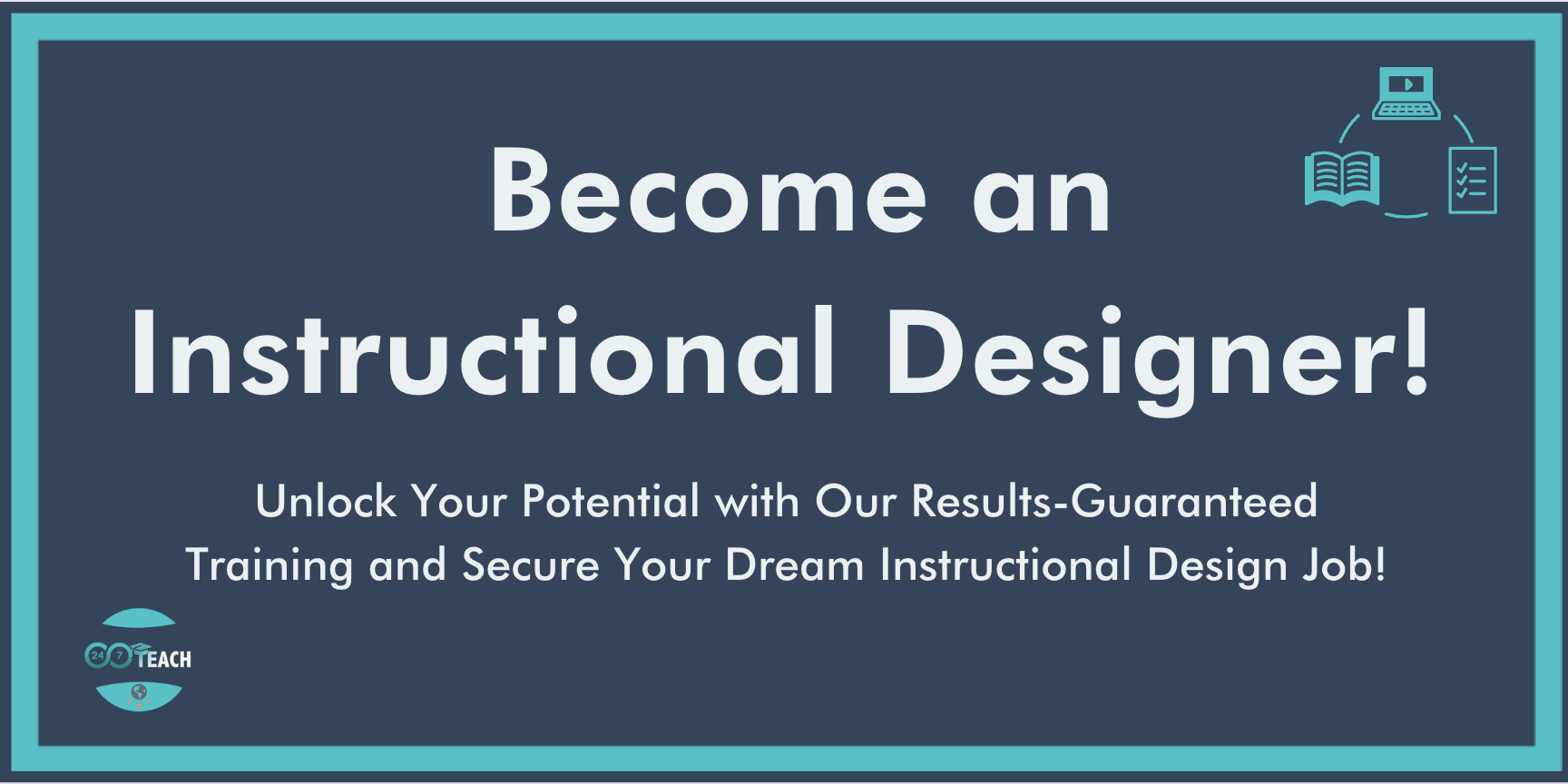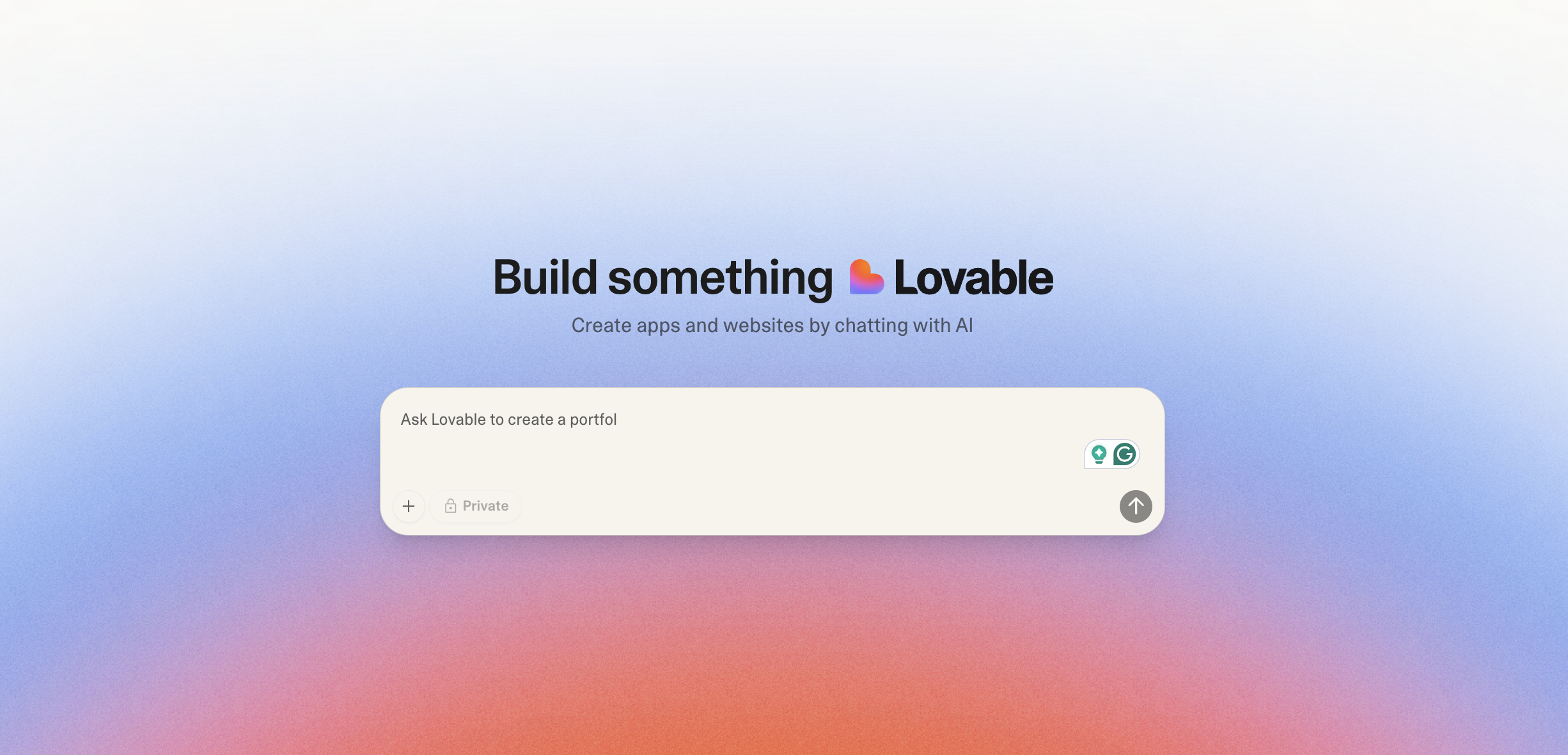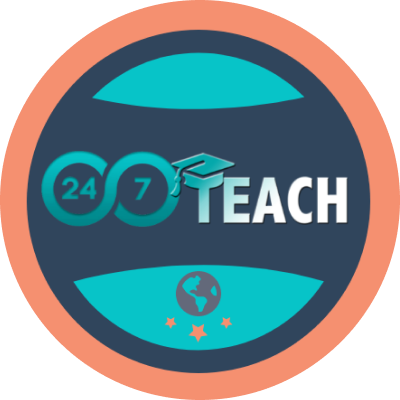Developing Your Niche as an Instructional Designer
By Justice Jones and Matthew Richardson
Instructional Designers at 24/7 Teach
Prefer to listen to this post? Click below.
What is your Niche as an Instructional Designer?
Instructional designers today face a challenging landscape that demands a diverse skill set. While versatility is important, true success in this field comes from identifying and honing a specific niche. My focus as an instructional designer lies in three key areas: experiential learning, learner analysis, and the soft skills of leadership, inspiration, and collaboration. These niches enable me to create immersive learning experiences tailored to individual needs, foster meaningful engagement, and drive impactful outcomes, all while maintaining expertise within a focused domain.
In this post, I’ll guide you through the process of developing your own niche in instructional design, whether it’s within a content area, a hard skill, or a soft skill. By identifying your strengths and passions, you can carve out a space where you excel and bring unique value to your learners and organizations.
Understanding the Importance of a Niche:
In a competitive job market, having a niche sets you apart from the crowd. A niche allows you to specialize in a particular area, making you the go-to expert and superstar in that field. This not only enhances your marketability but also enables you to deliver higher-quality work. Whether you are passionate about leadership topics, proficient in Instructor-Led Training (ILT), or adept at creating engaging webinars, identifying and cultivating your niche can lead to a more fulfilling and successful career.
Creating a Niche within Content Areas, Hard Skills, or Soft Skills:
Content Area Niches:
Content areas refer to specific subjects or topics that instructional designers focus on. Specializing in a particular content area allows you to become deeply knowledgeable about that subject, which can be particularly valuable in industries with highly specialized needs. Here are some examples:
• Healthcare Training: Focus on creating instructional materials for healthcare professionals, including compliance training, patient care protocols, or medical device usage.
• Financial Services: Develop training programs for financial institutions that cover topics such as regulatory compliance, risk management, and investment strategies.
• Technology and IT: Specialize in creating content for IT professionals, including training on software development, cybersecurity, or cloud computing.
By choosing a niche in a specific content area, you position yourself as an expert who understands the intricacies of that industry, making you a valuable asset to organizations within that sector.
Hard Skill Niches:
Hard skills are specific, teachable abilities that can be defined and measured. In instructional design, developing a niche around a hard skill allows you to offer specialized services that require technical expertise. Consider these niches:
• eLearning Development: Become an expert in creating online courses using tools like Articulate Storyline, Adobe Captivate, or Moodle. Specializing in eLearning can make you a sought-after designer as more organizations move toward digital learning solutions.
• Data-Driven Design: Focus on using analytics to inform instructional design decisions. This niche involves evaluating learner performance data, optimizing content based on feedback, and demonstrating ROI to stakeholders.
• Instructional Technology: Specialize in integrating and leveraging educational technology platforms, such as Learning Management Systems (LMS), mobile learning apps, or virtual reality in training programs.
Hard skill niches are particularly valuable because they address specific, high-demand needs in the market, making you an essential contributor to your organization or clients.
Soft Skill Niches: Communication, Collaboration, and Problem-Solving
Soft skills are the interpersonal abilities and personal attributes that enable effective communication, collaboration, and problem-solving—critical for instructional designers working with diverse stakeholders such as Subject Matter Experts (SMEs), Project Leads, and Learners. Developing a niche around these soft skills allows you to navigate the complexities of instructional design projects, ensuring that all parties are aligned and that the final product meets the needs of the organization and its learners. Here are key soft skills niches for instructional designers:
• Communication Excellence: Instructional designers must be adept at clear and concise communication, whether conveying ideas to SMEs, gathering requirements from Project Leads, or providing instructions to learners. Specializing in communication involves mastering the art of asking the right questions, actively listening to stakeholders, and translating technical jargon into understandable content. For example, when working with SMEs, being able to distill complex subject matter into digestible learning materials is essential for creating effective training programs.
• Collaboration Mastery: Successful instructional design is rarely a solo endeavor. It requires collaboration with various stakeholders, including SMEs, graphic designers, and IT teams. Specializing in collaboration means becoming skilled at facilitating teamwork, managing expectations, and ensuring that everyone’s contributions are aligned with the project’s goals. For instance, in a project involving the development of a new eLearning course, an instructional designer needs to coordinate the input from SMEs and Project Leads while ensuring that the content is accessible and engaging for learners.
• Problem-Solving Expertise: Instructional design projects often encounter unexpected challenges, such as shifting timelines, changing requirements, or technical constraints. Specializing in problem-solving equips you to address these issues proactively, ensuring that the project stays on track and meets its objectives. This might involve negotiating with Project Leads to adjust deadlines, finding creative solutions to technical limitations, or revising content based on learner feedback.
• Stakeholder Management: Managing relationships with key stakeholders is a crucial soft skill for instructional designers. This involves understanding the needs and expectations of different groups, such as SMEs who provide content expertise, Project Leads who oversee timelines and budgets, and Learners who are the end users of the instructional materials. Specializing in stakeholder management means being able to balance these competing priorities, ensuring that everyone is satisfied with the outcome. For example, an instructional designer might need to mediate between a SME’s desire for detailed content and a Project Lead’s demand for a streamlined, cost-effective solution.
• Emotional Intelligence and Empathy: Understanding and managing emotions—both your own and those of others—is vital in instructional design. Emotional intelligence allows you to build strong relationships, handle conflicts gracefully, and create a positive working environment. Specializing in emotional intelligence involves developing empathy for the challenges and pressures faced by your stakeholders, whether it’s the anxiety of a SME sharing their expertise or the frustrations of a Learner struggling with new material. By fostering empathy, you can create more supportive and effective learning experiences.
• Adaptability and Flexibility: The ability to adapt to changing circumstances and requirements is another critical soft skill. Instructional design projects often evolve as new information emerges or organizational priorities shift. Specializing in adaptability means being able to pivot quickly, revise strategies, and keep the project moving forward despite uncertainties. For example, if a Project Lead decides to change the delivery format from in-person training to virtual ILT, an adaptable instructional designer would swiftly rework the content to fit the new format while maintaining its effectiveness.
Specializing in these soft skills not only enhances your effectiveness as an instructional designer but also positions you as a crucial partner in any project. By mastering communication, collaboration, problem-solving, stakeholder management, emotional intelligence, and adaptability, you add significant value to the organizations you work with, ensuring that learning solutions are both impactful and aligned with organizational goals.
Steps to Find and Refine Your Niche
1. Self-Assessment: Identify Your Strengths and Interests
To develop your niche in instructional design, start by thoroughly evaluating your skills and interests. Reflect on where you excel and what you find most fulfilling. Consider the following questions to guide your self-assessment:
• Are you skilled in effective communication? Do you excel at conveying complex ideas clearly and succinctly, whether working with Subject Matter Experts (SMEs), Project Leads, or Learners? Are you adept at translating technical jargon into accessible language that resonates with diverse audiences?
• Do you thrive in collaborative environments? Are you able to work seamlessly with cross-functional teams, facilitating collaboration between departments like IT, HR, and content development? Can you manage expectations and align everyone’s contributions toward a common goal?
• Are you a natural problem solver? When faced with challenges such as shifting project requirements or technical constraints, do you excel at finding creative solutions that keep the project on track? Can you analyze data to identify areas of improvement and optimize learning outcomes?
• Do you have a passion for leadership and team development? Are you drawn to creating programs that foster leadership skills, such as decision-making, emotional intelligence, and team management? Do you enjoy mentoring others and helping them grow in their roles?
• Are you experienced in creating engaging eLearning content? Do you have expertise in designing interactive eLearning modules using tools like Articulate Storyline or Adobe Captivate? Are you comfortable integrating multimedia elements such as videos, quizzes, and animations to enhance learner engagement?
• Do you excel in managing stakeholder relationships? Can you effectively balance the needs and expectations of different stakeholders, such as SMEs, Project Leads, and Learners? Are you skilled at building rapport and fostering trust among all parties involved in a project?
• Are you adept at analyzing learner data and evaluating program effectiveness? Do you enjoy using data analytics to assess the impact of training programs? Can you demonstrate the return on investment (ROI) of your instructional design solutions to stakeholders?
• Do you have a strong background in technology and IT? Are you comfortable working with complex technical subjects, such as software development, cybersecurity, or cloud computing? Do you enjoy creating training programs that simplify these topics for a broader audience?
By answering these questions, you can identify the areas where your natural abilities and interests align with the needs of the instructional design field. This self-assessment will help you pinpoint your niche, allowing you to focus on what you do best and where you can add the most value.
2. Research the Market
Once you have a clear understanding of your strengths and interests, research the market to identify areas of high demand. Look for trends in instructional design and see where there is a gap you can fill. For example, with the rise of remote work, there is a growing need for expertise in virtual ILT and webinar creation. Similarly, as organizations place more emphasis on data-driven decision-making, instructional designers with skills in evaluation and analytics are in high demand.
3. Develop Your Skills
After identifying your niche, create a plan to develop your skills further. This might involve taking online courses, attending workshops, or working on projects that allow you to apply and refine your skills. LinkedIn Learning, Coursera, and other online platforms offer a wide range of courses in instructional design and related fields. Additionally, seek out mentors or join professional organizations where you can learn from others and stay updated on industry trends.
4. Build a Portfolio
A strong portfolio is essential for showcasing your expertise in your chosen niche. Include examples of your work that highlight your skills and demonstrate the impact of your instructional design solutions. For instance, if you specialize in eLearning, include courses you have developed, along with data on learner engagement and outcomes. If your niche is ILT, include training manuals, facilitator guides, and participant feedback.
5. Network and Market Yourself
Networking is crucial for building your reputation and finding new opportunities. Seek out opportunities to help others in your organization based on your Niche. Join professional organizations such as the Association for Talent Development (ATD) or the eLearning Guild, attend conferences, and participate in online forums. Share your expertise by writing blog posts, presenting at conferences, or contributing to industry publications. Use social media to connect with other professionals and promote your work.
Case Studies: Integrating Content Areas, Hard Skills, and Soft Skills in Instructional Design
Case Study 1: Healthcare Training and Communication Excellence
Sarah Johnson, an instructional designer specializing in healthcare training, recognized that communication breakdowns between medical staff were leading to inefficiencies and potential risks in patient care. Leveraging her niche in both healthcare content and communication excellence, Sarah developed a comprehensive training program aimed at improving communication among healthcare professionals.
She created eLearning modules focused on effective communication strategies in high-pressure environments, combined with virtual Instructor-Led Training (VILT) sessions where medical teams practiced these strategies through role-playing scenarios. Throughout the project, Sarah used her collaboration mastery to work closely with Subject Matter Experts (SMEs), ensuring that the content was both accurate and applicable to real-world situations. The training program not only improved communication within the hospital but also enhanced patient outcomes, establishing Sarah as a critical asset to the healthcare organization.
Case Study 2: Financial Services Training and Problem-Solving Expertise
David Lee, an instructional designer with a background in financial services, identified a need for enhanced compliance training within his organization. The existing training programs were outdated and failed to engage learners, leading to a lack of adherence to regulatory standards.
David’s niche in data-driven design and problem-solving expertise came into play as he tackled this challenge. He analyzed learner performance data to identify key areas where the training was falling short. David then redesigned the compliance training program, incorporating interactive eLearning modules and real-world case studies to make the content more relevant and engaging. He also collaborated closely with Project Leads and IT teams to ensure the seamless integration of the new training program into the company’s Learning Management System (LMS).
Through his problem-solving abilities and adaptability, David successfully revamped the compliance training, resulting in higher learner engagement and improved compliance rates, positioning him as a go-to expert in financial services training.
Case Study 3: Technology and IT Training with Collaboration Mastery and Emotional Intelligence
Emily Carter, an instructional designer specializing in technology and IT training, was tasked with developing a training program for a new software rollout within a large corporation. The project required extensive collaboration between multiple departments, including IT, HR, and end-users, each with different priorities and concerns.
Emily’s niche in instructional technology, coupled with her mastery of collaboration and emotional intelligence, enabled her to navigate the complexities of this project. She facilitated workshops with SMEs to gather detailed technical content and worked with graphic designers to create intuitive, user-friendly eLearning modules. Emily also organized focus groups with end-users to gather feedback on the training materials, demonstrating her empathy and commitment to creating a positive learning experience.
Her ability to manage diverse stakeholder relationships and address the emotional aspects of change management ensured the success of the software rollout. The training program was well-received, and Emily’s approach became a model for future technology training initiatives within the company.
Overcoming Challenges in Developing Your Niche
While developing a niche can be rewarding, it also comes with challenges. You may need to convince stakeholders of the value of your specialized skills, or you might face competition from others in the same niche. Here are some tips to overcome these challenges:
• Build a strong business case: Use data and case studies to demonstrate the impact of your niche expertise on learning outcomes and business goals.
• Stay current: Continuously update your skills and knowledge to stay ahead of industry trends and emerging technologies.
• Collaborate: Partner with other professionals to expand your network and enhance your offerings. For example, if you specialize in content development, collaborate with graphic designers or multimedia experts to create more comprehensive solutions.
• Be adaptable: While it’s important to focus on your niche, remain flexible and open to expanding your skill set to meet changing demands.
Conclusion: The Path to Becoming a Superstar
In the ever-evolving field of instructional design, true success comes from embracing who you are—your strengths, weaknesses, and unique abilities—and turning your chosen niches into your superpower. Whether your focus is on experiential learning, learner analysis, or the soft skills of leadership, inspiration, and collaboration, like mine, these niches are what make you extraordinary. They allow you to add immense value to the people and organizations you serve, using your specialized skills to create impactful change in the education industry and in the lives of learners.
Being a superstar in this field isn’t about being a jack-of-all-trades; it’s about mastering the areas where you excel and using that mastery to inspire others and change the world. Your niches are your superpowers, and how you leverage them will define your impact.
As you embark on this journey, remember that the path may evolve. Stay curious, remain open to new opportunities, and continue to grow within your niche. The instructional design landscape is dynamic, and those who adapt and deepen their expertise within their chosen area will truly thrive. Embrace your niches, use them to make a difference, and watch as you not only flourish in your career but also inspire others to do the same.
Discussion Assignment: Selecting the Right Instructional Design Tools
Join the conversation and participate with the 24/7 Instructional Design community by completing the assignment and adding your answers in the comment section below:
Considering the diverse range of potential niches within instructional design—ranging from content areas like healthcare or financial services to hard skills like eLearning development or data-driven design to soft skills such as leadership development or change management—how would you approach identifying and refining your niche? What steps would you prioritize, and how would you balance the need for specialization with the demand for versatility in the field?
Additionally, if you chose a niche today, which one would it be and why? How do you see this niche evolving with the current trends in instructional design?
Need Guidance on Navigating the Shift to Instructional Design?
Before You Go...
Discover the Unmatched 24/7 Teach Experience:
Our Instructional Design bootcamps and career coaching services have a 100% success rate. We redefine learning by immersing you in practical, hands-on projects, ensuring you acquire vital professional expertise while making a meaningful difference in your community.
Unlock your true potential today with 24/7 Teach and invest in your future.














